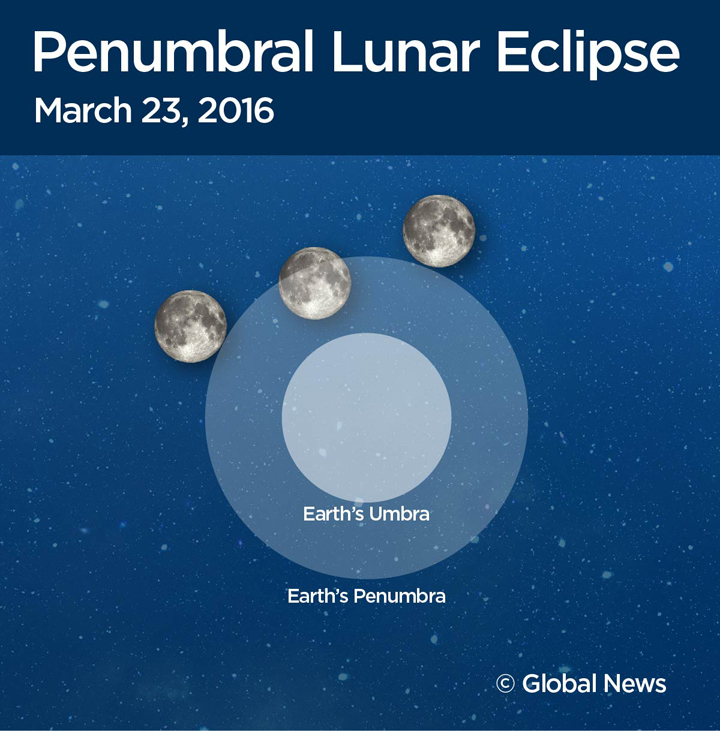It won’t be nearly as dramatic as a solar eclipse or even a total lunar eclipse, but it’s still an astronomical marvel.

On Wednesday morning the moon will pass through Earth’s outer shadow, giving us a penumbral eclipse.
Earth has two shadows: the inner, dark one called the umbra, and an outer, fainter one called the penumbra. During a lunar eclipse, the moon slips across the umbra (before it passes into the umbra it first passes through the penumbra), darkening the disk and often turning it a coppery red colour during totality.
The entire penumbral eclipse will be visible in most of British Columbia. But for the rest of Canada (excluding the extreme eastern tip of Newfoundland and Labrador) it will only be visible at moonset.
But because the penumbra is so much fainter, it’ll take a keen eye to see the change. You can go out and test it for yourself: it will only be a small difference.
The eclipse begins at 5:39 a.m. ET (PT). However, the maximum eclipse occurs at 7:47 a.m. ET, when the moon is below the horizon. For those in the west, it begins at 2:39 a.m. PT with maximum at 4:47 a.m. It ends at 6:54 a.m.

Get breaking National news
And even if you don’t notice the eclipse, you can also enjoy Jupiter, which will be the brightest object to the moon’s right. If you have a pair of binoculars, you might want to train them on Jupiter: battling the glare of the moon, you’ll likely be able to spot four of its more than 60 moons. From left to right, they will be: Ganymede, Io, Europa and Callisto.
Also, if you look up at the moon tonight, you’ll likely think it’s full. But the full moon — when it is 100 per cent illuminated — occurs at 8:01 a.m. ET (5:01 a.m. PT).









Comments